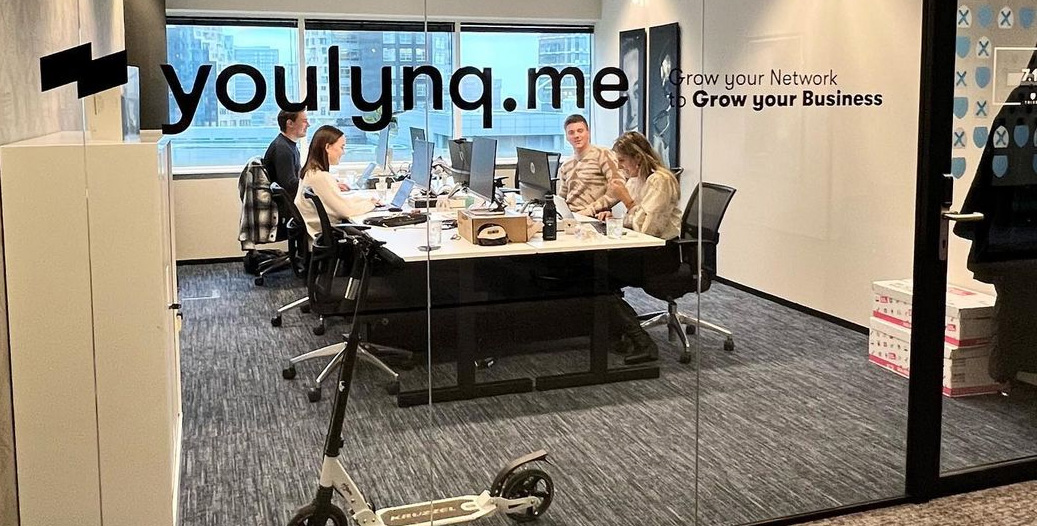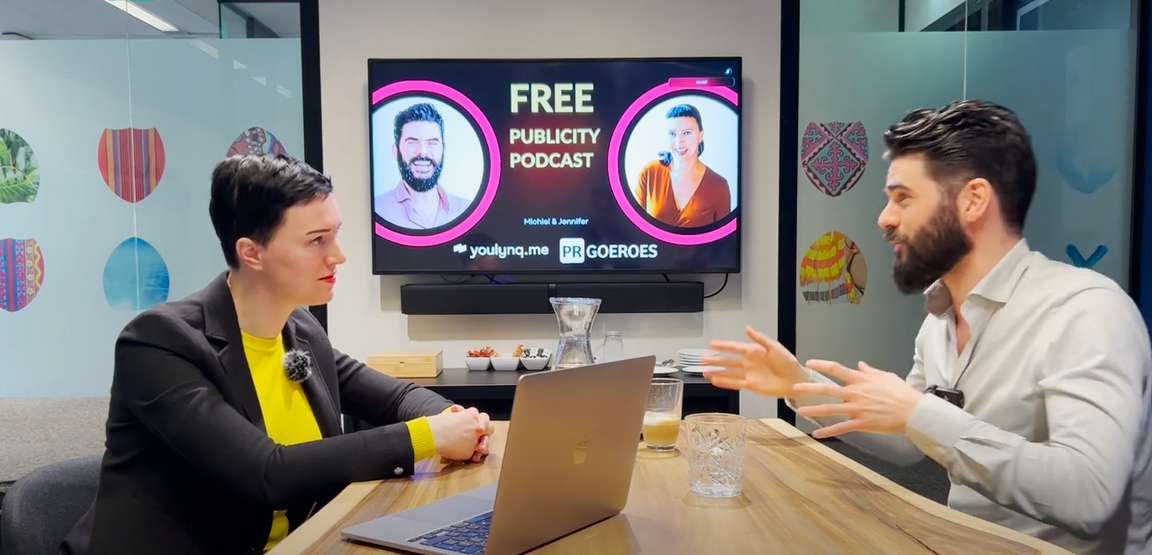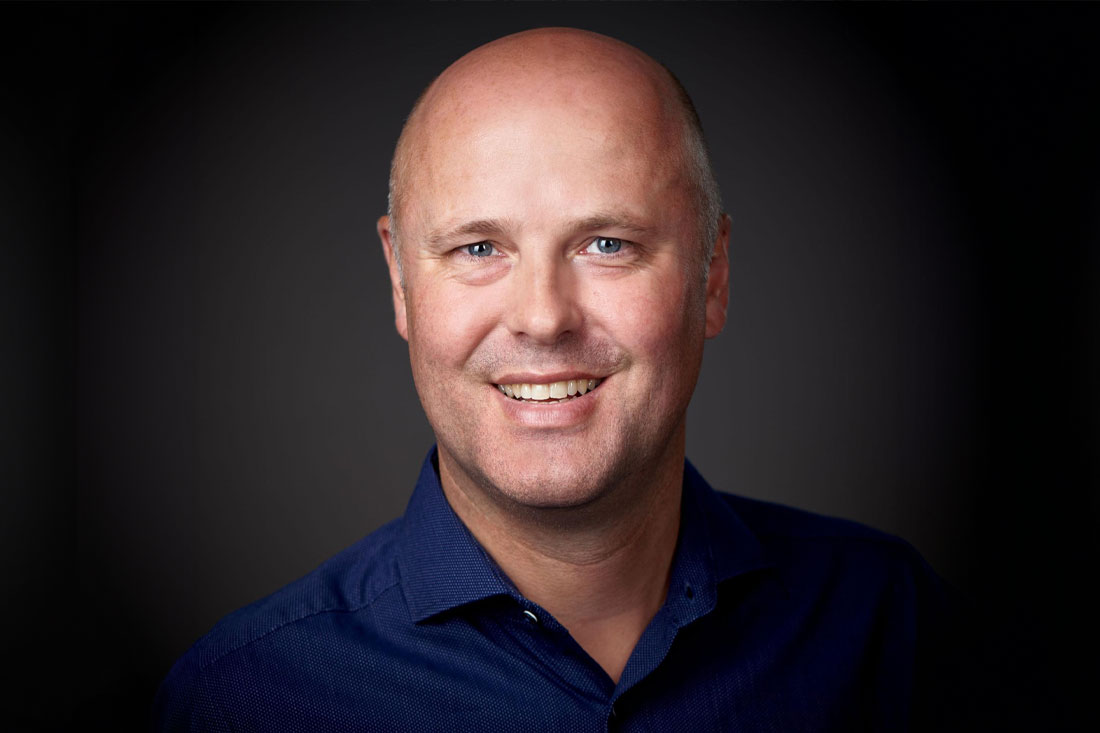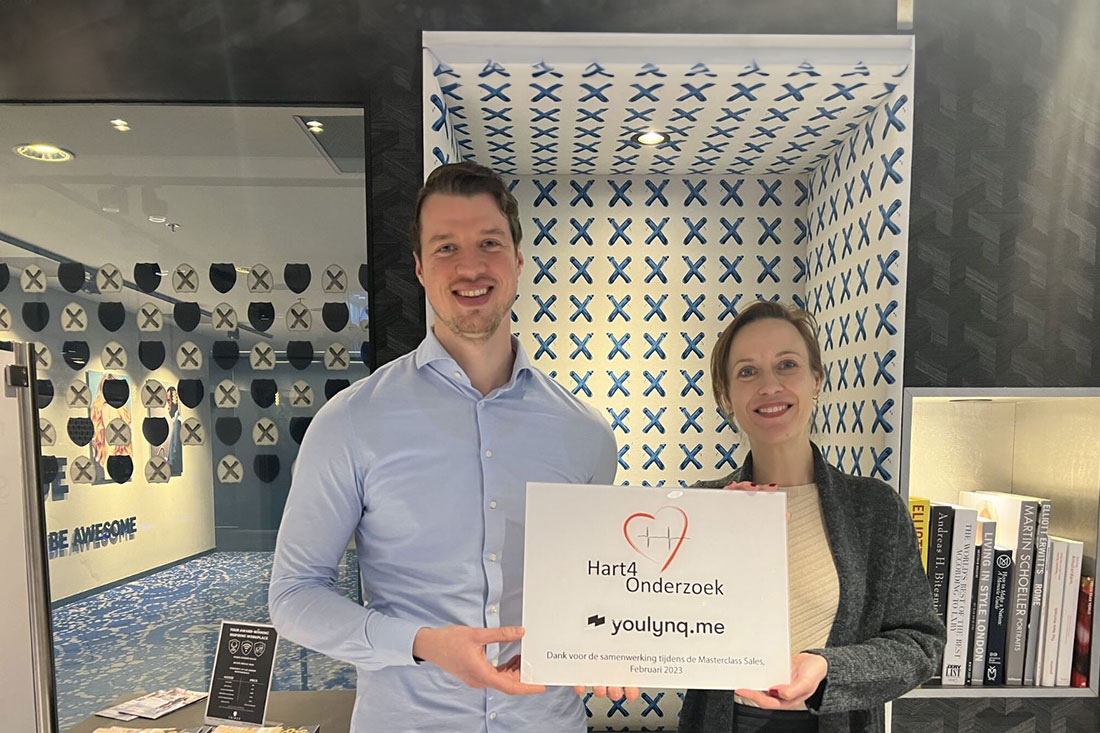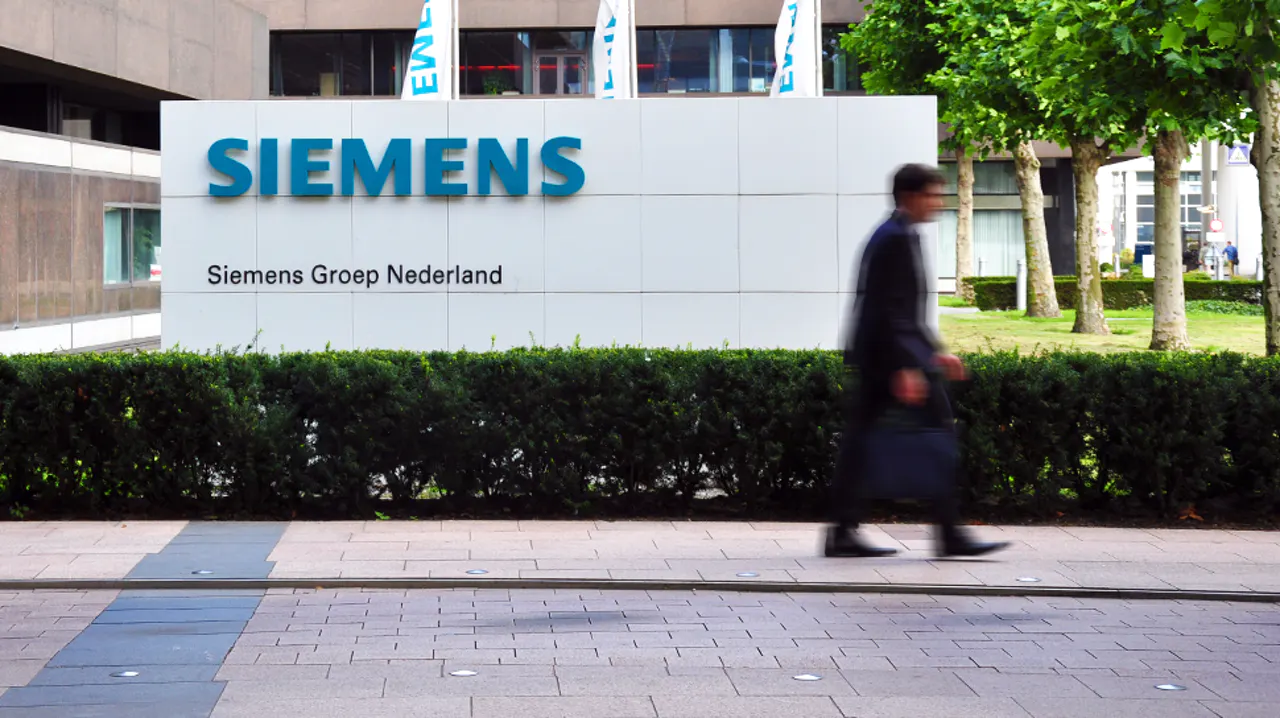You never really take the time to review your LinkedIn profile critically, or perhaps you never feel like adding more details or reflecting on your achievements. And let’s not forget, your profile picture has been there forever, and you’ve grown attached to it. So, why bother changing it?
However, there are several reasons why I strongly advise you to take a moment and give your LinkedIn profile the attention it deserves. It deserves that, and it pays off…
First of all, it is really satisfying and fun to think back on what you have done and what you have achieved. And that is not only to motivate you. It is true. You will see.
The obvious reason is that you can be obligated to improve your profile because you are looking for new clients. Maybe that moment is now? Continue reading…
More importantly, you are forgetting about all the other awesome clients that you’re missing because you haven’t optimized your reach. Your profile is less complete, less attractive, or less professional than the ones of your fellow entrepreneurs.
Last but not least, business. Your LinkedIn profile is your landing page. More clients will see your profile than they will visit your website. This is especially important to understand how LinkedIn is different for B2B marketing, as the platform is tailored for professional connections and networking. Personal branding on LinkedIn is essential; your profile needs to make the sale and enhance your LinkedIn conversions. To all the connections you make, people you invite, or people you want to meet, you want to give your best presentation. To excel in effective networking on LinkedIn, practice what you preach; that’s what it’s all about. As a professional, you need to be the best, better than the rest, precise, functional, efficient, effective, and so on… Your profile needs to reflect that.
Just one example. We have analyzed the effect of changing your LinkedIn profile picture, and the differences are stunning: Your acceptance rate of connection requests to new connections can be 20% higher if you have a professional and likable profile picture!
Ok, that’s enough, you get the point. Here are the 10 easy-to-apply tips on how to Optimize your LinkedIn Profile as a professional:
1. Work from head to toe, figuratively and literally.
Start at the top and work your way down, so you know what’s left to do and you start with your first impression. Additionally, make sure your profile is as complete as possible. Ensure you create and publish a post, and then ‘Feature’ it to showcase your expertise and accomplishments. LinkedIn automatically shows you which steps you have missed. Be precise and use proper punctuation. Also, ensure that your profile is consistent; use one language, preferably English, and one or maximum two types of bullet points. Remember, LinkedIn consistency is key to maintaining a professional image. And above all, remember that your LinkedIn profile is not your Facebook profile. Maintain a professional and functional approach. Keep these two words in mind at all times when using LinkedIn: professional and functional.
2. Your Profile Picture. ✔️

This topic is widely discussed, and there are many different opinions with no definitive right or wrong answer. Your profile picture is a personal choice, but it should depend on your profession, industry, and role. In general, your best picture is one where you appear sympathetic and professional at the same time. It doesn’t have to be your most attractive or coolest picture, nor your most formal one. Choose a nice and professional photo. Avoid sunglasses, drinks, phones, and cigarettes. Remember, it is not your Facebook profile picture; treat it as if it were meant to be the profile picture on your company website. Aim for a sympathetic and professional look. Tip: Smile!
3. Optimize your Settings.
Customize your LinkedIn URL and make your profile public. Changing these (privacy) settings increases the likelihood of clients finding you. Click on “Customize Your LinkedIn URL & Make your Profile Public” to make the changes immediately. Don’t worry, people will not show up at your doorstep right away. Tip: Use the same name on your profile to improve your online visibility.
4. Get endorsed & Get recommended.
Always ensure that your skills are relevant and accurate. Just like in real life, if you know your worth, go out and get what you deserve. In this case, ask for it. To get endorsed, you have to actually ask people by sending them a message or asking your connections in person. Giving endorsements to others can also help you receive endorsements in return. To get recommended, there is a button you can use right next to recommendations: “Ask for a recommendation.” I always advise asking your last client, manager, or peers to write a recommendation as soon as you finish a project. To boost your conversion rate, consider sending an additional message mentioning that you have just requested a recommendation and kindly ask them to fill it in. In most cases, people will even offer to write it for you. Perfect! Tip: Ask for recent recommendations.
5. Use a (decent) Background.
Stand out from the crowd and use a background. This feature is highly underutilized. However, ensure that you use a relevant and calm background. Avoid using holiday pictures, party photos, or fireworks, unless you have a compelling reason. My advice: less is more. Use your logo, a slogan, or your personal banner, but keep it professional. Once again, professionalism and functionality are key. Tip: Use a similar style of background for everyone in the company.
6. Your Headline.
Your headline is the first impression you give. Make it clear and make yourself stand out. Remember that you want to be easily found and make an impact at the same time. However, achieving one doesn’t always guarantee the other. Your headline should contain, at the very least, 3 elements: your current title, your expertise, and your mission & vision. Tip: “Founder @ YouLynq.me | B2B Marketing | LinkedIn | Grow your Network to?”
7. About / Your Summary.
Be creative, choose a trendy bullet point, and use it consistently. For inspiration, visit https://coolsymbol.com/. As the word “about” suggests, this section is about you. Utilize this area to your advantage since it forms part of your first impression, and clients are highly likely to read it. Apply three rules: share something about yourself as a person, highlight your accomplishments, and keep it concise. Avoid using buzzwords and provide concrete examples. You can use the following structure: a personal note, fields of expertise, years of experience, highlights, relevant projects + client names, responsibilities, and results. Strive for a balance between descriptive text and bullet points. If you want to make a strong impression, try using a different font occasionally, while still maintaining consistency. For inspiration, visit https://lingojam.com/boldtextgenerator. Tip: Include some prominent companies you have done business with and of course, use ChatGPT 😉
8. Your Experiences.
As mentioned earlier, consistency is key. Even if your experience goes back a long way, try to use the same structure in the description, as you did for your other experiences. Be smart when explaining your roles. Your experience is a valuable asset, so present it in a clear and structured manner. Also, take a look at job descriptions and “borrow” some smart keywords. If you’ve held multiple roles, don’t be shy to mention all of them: “Owner | Development & Advisory | Business Lover.” It’s also important to avoid using buzzwords and rely solely on bullet points. Don’t forget to fill out the description part as well with 2 elements: Your responsibilities and your achievements. Tip: Add a website to your experience and ensure that you and all your colleagues are linked to the same Company Page.
9. Use Data.
We live in a data-driven business world, and its importance continues to grow each day. Clients are eager to see data-driven results. Use this to your advantage by showcasing your accomplishments in numbers. Be humble and provide only genuine data. LinkedIn allows you to include visuals, case studies, links, and numbers in your descriptions. Tip: Display client references and share business facts that everyone would find interesting.
10. Sell Yourself in a Smart Way.
As a business professional, you are an expert in your field. Regularly promoting your personal brand on LinkedIn in a structured manner is crucial – from managing your LinkedIn posts to engaging with your network. This includes understanding the LinkedIn posting basics – the types of content that resonate with your audience. With the right strategies, you can even aspire to become a LinkedIn Top Voice in your industry. Like, share, comment, and post daily and weekly to boost your followers on LinkedIn. Consider focusing on how to create a great LinkedIn post that showcases your expertise and engages your audience. However, prioritize quality by engaging in professional and relevant discussions. And last but not least, write an article every 6 weeks to 2 months. Tip: Make it visible on your profile that you have an eye for detail and showcase your posts in featured.
11. Bonus tip for advanced users.
Since March 2021, LinkedIn has introduced several new features to showcase your personal story. One such feature is the “Creator Mode.” You can enable this through your profile dashboard. With Creator Mode, your shared content will be highlighted, and you can add hashtags to your profile, providing insight into the topics you discuss. Additionally, you can now include a personal “Video Cover Story” that visitors to your profile will see immediately. We highly recommend utilizing this feature to inspire and share knowledge, while avoiding excessive self-promotion and pitches. Tip: Add #’s and your website to your introduction.
Good luck!
From our Knowledge Base
It is crucial to ensure that your LinkedIn profile is up to date and visually appealing. Strive for 100% completeness and continuously optimize your profile. Once you have accomplished this, it is essential to identify your audience and define your goals. Unfortunately, not every company or individual recognizes the significance of this step. Knowing your target audience enables you to optimize your page for searchability. Upon completion, your follower count will increase, allowing you to publish engaging content on your company page.
Read moreLinkedIn is most active during the morning rush hour from 8 am to 10 am and the post-work power hour between 6 pm and 8 pm, offering optimal engagement opportunities for professionals seeking to connect and share content. Additionally, weekend mornings, especially from 8 am to 10 am on Saturdays, also see increased activity as users catch up on industry news and plan for the upcoming week.
Read moreLinkedIn attracts millions of professionals who are actively seeking meaningful connections and opportunities to enhance their companies. Unlike social media platforms such as Instagram, Facebook, or YouTube, LinkedIn specializes in the B2B market. While Instagram or YouTube may feature influencers endorsing products or services, LinkedIn focuses primarily on networking and finding the ideal collaborators for your business endeavors.
Read more